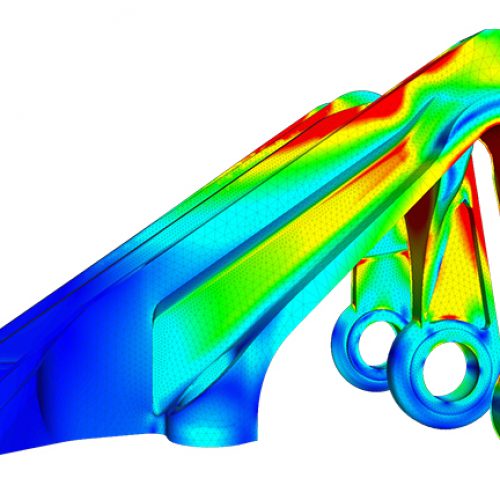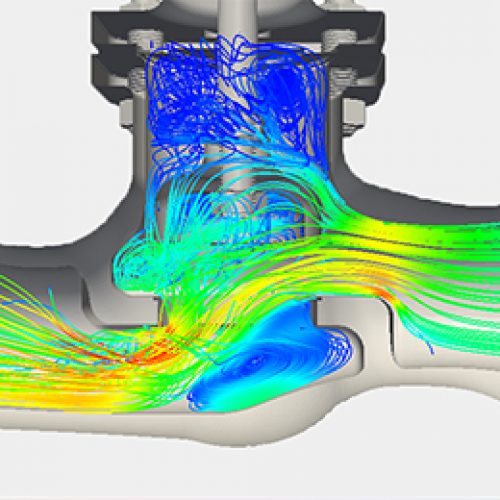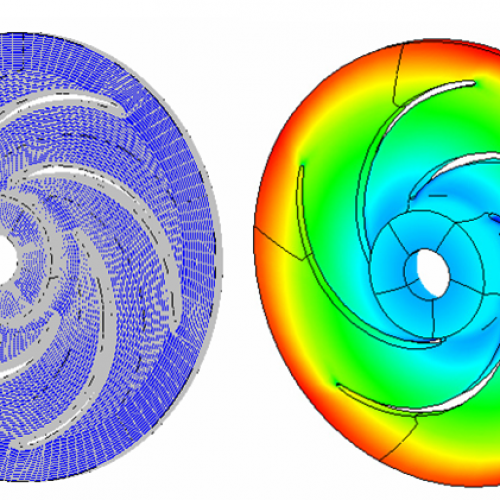Services
3D CAD / FEA / CFD Services
3D CAD / FEA / CFD Services
FEA And CFD Analysis
Finite Element Analysis or FEA is the simulation of a physical phenomenon using a numerical mathematic technique referred to as the Finite Element Method, or FEM. This process is at the core of mechanical engineering, as well as a variety of other disciplines. It also is one of the key principles used in the development of simulation software. Engineers can use these FEM to reduce the number of physical prototypes and run virtual experiments to optimize their designs.
FEA-based simulations are used to serve different design purposes. Two basic design activities are design analysis and design synthesis. In design analysis, all the design variables and system parameters are given; an FEA model is to find the system state or response to external loads. It is a type of task for design analysis, which is commonly referred to as what-if simulation. In design synthesis, some design variables are to be determined based on the specified design criteria.
In other words, design variables are given as changeable ranges rather than values, FEA models are applied to evaluate the responses of a system; although design variables can vary in a design space.
FEA results for different scenarios are compared to optimize the solution based on the specified design criteria. The design study is a simulation-based design synthesis. The same FEA model is executed repeatedly under different settings of design variables to find the best system outcomes against design goals.


With FEA, you can road test your design before going anywhere near a production facility. Do these parts fit together? What impact will freezing temperatures have on this part? How will my design handle intense vibration? Questions like this can be answered, and your design tweaked and re-tested—all virtually!
This way, the expensive process of physical prototyping is only done when you have confidence in your design. Adding FEA to your product development process will invariably result in quicker development times, reduced development costs, and a more robust and reliable product.
Why finite element analysis?
- Helps you to better understand your product’s mechanical and thermal performance inch by inch.
- Helps you identify possible failure spots and failure modes.
- Enables virtual testing in a fraction of time and cost compared to laboratory testing, eliminating the need for expensive prototypes.
- Enables product and process optimization by quickly adjusting the design and simulating its performance.
FEA Services:
Static Analysis:
These services include
- Linear and non-linear stress analysis
- Multibody multi-contact analysis
- Composites molding and simulation services
- CAD and FEA generation services
Dynamic Analysis:
These services include:
- Vibration FEA Services
- Harmonic and modal FEA analysis
- Frequency response analysis
- Transient dynamic analysis
- Explicit dynamic FEA services
- Impact analysis including subsea dropped object studies
- Crash analysis
- Metal forming analysis
Fatigue Analysis:
These services include:
- Thermal loading fatigue assessment
- Crack propagation FEA
- Weld detail fatigue analysis
- Low and high cycle fatigue
Thermal Analysis:
These services include:
- Steady-state and transient thermal
- Radiation, convection, and conduction thermal analysis
- Plate and shell-and-tube heat exchanger performance assessment
- Phase change thermal services.
CFD(Computational Fluid Dynamics)
Computational Fluid Dynamics (CFD) is the analysis of fluid flows using numerical solution methods. Using CFD, you can analyze complex problems involving fluid-fluid, fluid-solid, or fluid-gas interaction. Engineering fields where CFD analyses are frequently used are for example aerodynamics and hydrodynamics, where quantities such as lift and drag or field properties as pressures and velocities are obtained. Fluid dynamics are involved with physical laws in the form of partial differential equations. Sophisticated CFD solvers transform these laws into algebraical equations and can efficiently solve these equations numerically.


Why computational fluid dynamics?
- Helps you to better understand your process’ flow and thermal performance in an, otherwise difficult, visual way.
- Helps you identify possible failure spots and failure modes.
- Enables virtual testing in a fraction of the time and cost compared to laboratory testing, eliminating the need for expensive prototypes.
- Enables product and process optimization by quickly adjusting the design and simulating its performance.
CFD Services
Hydrodynamic Analysis:
These services include:
- Vortex included vibration analysis
- Erosion CFD services
- Offshore equipment stability: Buyouncy and center of gravity studies
- Added masses for subsea hardware CFO calculations
- Hull performance assessment and wave-making CFD solutions
- Vibroacoustic fluid-structure interaction
- Wave and sea current loading on offshore structures
- Thrusterflow molding and thruster/ hull interactions
- Sloshing in cargo and oil/gas separator thank CFD services.
Heat Transfer Analysis
These services include:
- Plate and shell and tube heat exchanger performance analysis
- Stagnation and recirculation analysis on boilers, heat exchangers and values
- Joule-Thomas cooling analysis
- Conjugate heat transfer modeling.
- Burners, boilers, heat pipes CFD services
- Latent heat, phase change materials simulation solutions.
- LED lamp thermal CFD services.
Aerodynamic Analysis
These services include:
- Wind turbine blade Design
- Vortex shedding CFD services
- HAVC CFD solutions
- Wind-farm analysis CFD services
- Airborne particle transport analysis
- Building and structures wind loading
- External vehicle CFD aerodynamics services
- Fan and rotor CFD design services.
Multiphase Fluid simulation
These services include:
- Liquid and gas diffusion in various media ( oil and gas safety)
- Fuel injection design and optimization
- Mixed species and reacting flow CFD services
- Fluid spray design and optimization CFD services.
The introduction of a formal Engineering Design Optimization strategy early in the design process has proven successful in many industries. While it is natural to assume that the problem is one of simply minimizing weight component by component, the problem is more complex, as the need to maximize strength, maximize aerodynamic efficiency (lift and thrust) and minimize the cost of fabrication are important parameters. CAD models are used extensively with FEA and CFD to solve this problem from both a structural and aerodynamic perspective. Without these tools, the optimization problem is extremely daunting.
Engineering optimization has led to lightweight composites for military and biomedical applications. The weight of military equipment effect transportation cost and operator fatigue greatly. Weight reduction of a soldier’s equipment has reduced the burden and improve maneuverability. In the past, most components were over-engineered due to a lack of viable materials. The introduction of Kevlar, carbon fiber, fiberglass, and other composites has revolutionized the industry Weight reduction in prosthetics, artificial limbs, joints, braces, and other biomedical devices have greatly improved mobility giving patients a new life.
At MaXellence Engineering Technologies our FEA and CFD services help solve partial differential equations and add huge value to the production design process.
